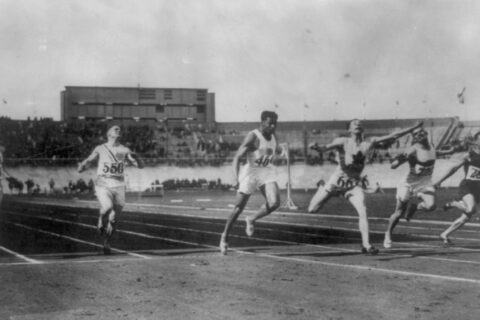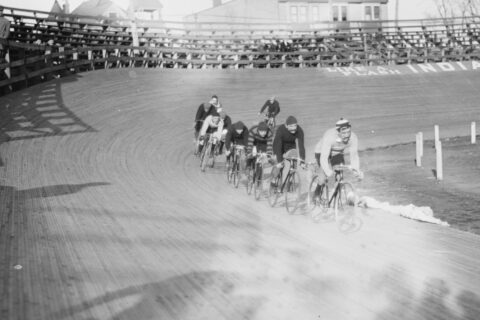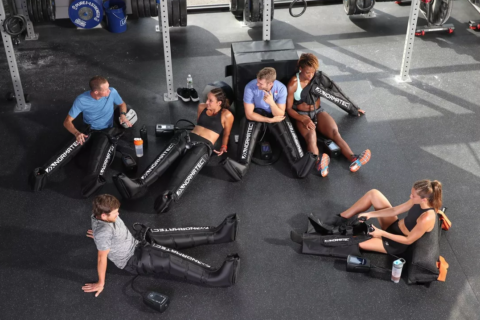Several years back, late in the season, I found myself climbing with a very talented up-and-coming cyclist. Fortunately for me, he was still on the rise; I had beaten him all season long. Today, however, he could see the pained look on my face, and asked the question I really didn’t want him to ask: “What’s your heart rate?”
Earlier that month I had been putting out numbers I hadn’t seen in years, and I was holding my own against European and American pros in big races. Immediately after the season ended, I took a break.
Now, only three weeks later, I was struggling on a training ride. I begrudgingly admitted how high my heart rate was. My friend’s eyes lit up; he licked his lips. We both knew what was coming. I was about to get pummeled.
How fast does detraining happen?
Hang up the bike and we have a grace period of about three days before we experience any drop in form. After four days, the detraining effect hits hard, and declines continue over the next week.
The best way to see this decline is to focus on our VO2max, an indicator of our ability to use oxygen. It can drop 7% within 12 days, due mostly to the heart becoming less effective at pumping blood (something called stroke volume). After another month or two of inactivity, our VO2max will drop another 9% due to our muscles losing their ability to effectively use oxygen (called mitochondrial activity).
That total drop, 16%, is the difference between winning a race and struggling to make the time cut. New cyclists have it worse: any improvements they’ve seen in their VO2max can be lost in just four weeks. So, if we detrain that fast and dramatically, why do top cyclists take so much time off each year? Why do coaches routinely recommend that we take a break every autumn, no matter how good we’re feeling?
At the professional level, upwards of a month of rest is necessary for a simple but important reason: to stay refreshed, in body and mind. The same holds true for amateurs. The off season keeps athletes of all levels from burning out. Most importantly, the returns from taking a disciplined off season are considerable. We can’t peak unless we also take the time to rest.
The benefits of taking a break
How can detraining in October help you peak in May? To answer this, let’s go back to that drop in VO2max mentioned earlier. That initial significant drop in the first week is due to decreases in stroke volume—one of the most important attributes of any endurance athlete. Stroke volume is simply the amount of blood our hearts can pump with each beat.
Our bodies have two ways of increasing stroke volume. The first is to increase blood volume. If we have more blood in circulation, our hearts can fill with more blood between beats. This is a biochemical change. The second way to increase stroke volume is to increase the size of our hearts. Think of the heart like a bellows—a bigger bellows can pump more air. This type of change is structural.
As we get fitter, we experience many structural and biochemical improvements. What we refer to as base training tends to produce more structural changes over time, while interval work tends to produce biochemical changes. While structural changes set our overall level, biochemical changes put us on the podium. When we look just at structural changes, detraining gets a lot less scary.
Structural improvements such as capillary density, muscle fiber ratios, and the size of our hearts do not detrain quickly. Many studies have shown no changes even 12 weeks after stopping exercise. In fact, one study demonstrated that many well-trained endurance athletes still had larger hearts 14 years after retiring.
Biochemistry drives detraining
The dramatic fitness declines we experience when we take time off are caused by biochemical mechanisms. (For simplicity, I am lumping in hormones, fluid balance, and enzyme activity into this term.)
Think of these biochemical changes like the seasonings on a dish. They can be added quickly, relatively easily, and are surprisingly effective additions to our physiological machinery. Our body can produce these changes in a matter of weeks. However, to continue with the analogy, in the long run you wouldn’t want to over-season the meal.
Biochemical changes are a stress to the body. We shouldn’t try to maintain them indefinitely. If we do try to sustain them, we either burn out or we become desensitized to the changes—just as with all chemical reactions in our bodies. (Remember when one cup of coffee got you through the day? If you want to feel that jolt from your cup of coffee again, stop drinking it for a few months.)
Letting the biochemical adaptations of training clear, and then waiting for the season to bring them back, gives us a racing “jolt.” Otherwise, we’d cruise around at 75% of our capability all of the time. And this is why detraining in the off season allows us to peak during the racing season.
That’s also why it’s best to embrace the inevitable detraining effect of a proper off season. It’s simply biochemical changes, which can come back fast. Remember, the structural changes stick with you.
Even better, with proper base work, those structural changes can improve year-to-year. Detraining studies indicate it’s only new athletes who go back to that “couch potato” level. Well trained athletes’ levels stay well above average even after months.
How to reap the rewards of the off season
To get the most from your off season, try these commonsense suggestions on prolonged rest.
Eat cake!
If you like cake, have some. If you’re not into cake, find something else to splurge on. The point is, relax and let go.
But not too much cake
Eat a slice of cake, rather than eating an entire cake. Everything in moderation.
Get off the bike
Take your mind completely off the bike by keeping your body completely off the bike. For those of you who obsess about detraining or losing form when you can’t ride, hopefully knowing the process your body is going through—and the rewards you’ll get only from abstaining—will make this easier.
Stay active
Instead of riding the bike, find another way to stay active. Go hiking, snowshoeing, snowboarding, or skiing. Just be careful not to bring an obsessive mentality to these other forms of exercise. This time is not about gaining fitness.
Enjoy the bike
The off season doesn’t necessarily mean completely avoiding your bike. Just change how you use it. Maybe you’ve always wanted to try mountain biking or do some exploring. You always turn right at that one intersection. Now’s the time to turn left.
Use the time to fix things
The off season is the perfect time to work out any kinks you’ve had during the season. Maybe you’ve had a nagging sensation that doesn’t feel right in your knee or hip. Take the opportunity to see someone about the issue and try to sort it out.
Return slowly, and focus on the structural
When you return to training, be smart. Don’t jump back into it full bore and risk injury. Try plyometrics if you’ve completely set exercise aside, as this will get your body ready for the rigors of riding a bike again.
Adjust your ranges
When you’re well rested, your heart rate could spike more easily. Those individual physiological changes might mean you’ll need to recalibrate your training zones for a time.
Most importantly, have fun
The most important component of the off season is placing an emphasis on having fun. It’s the time to do whatever you want. Don’t use a scale, and be sure to enjoy the time away.






